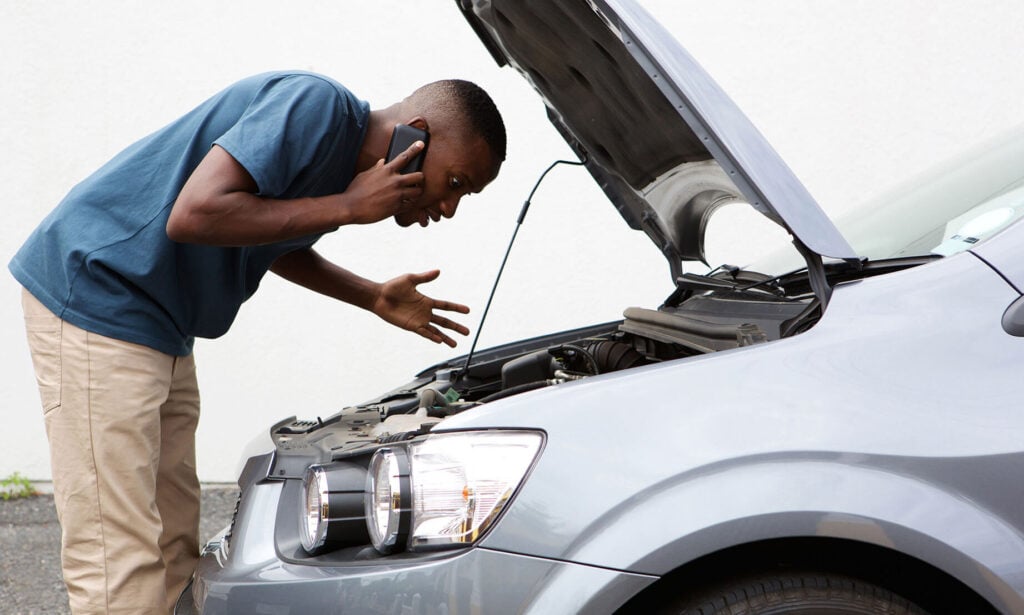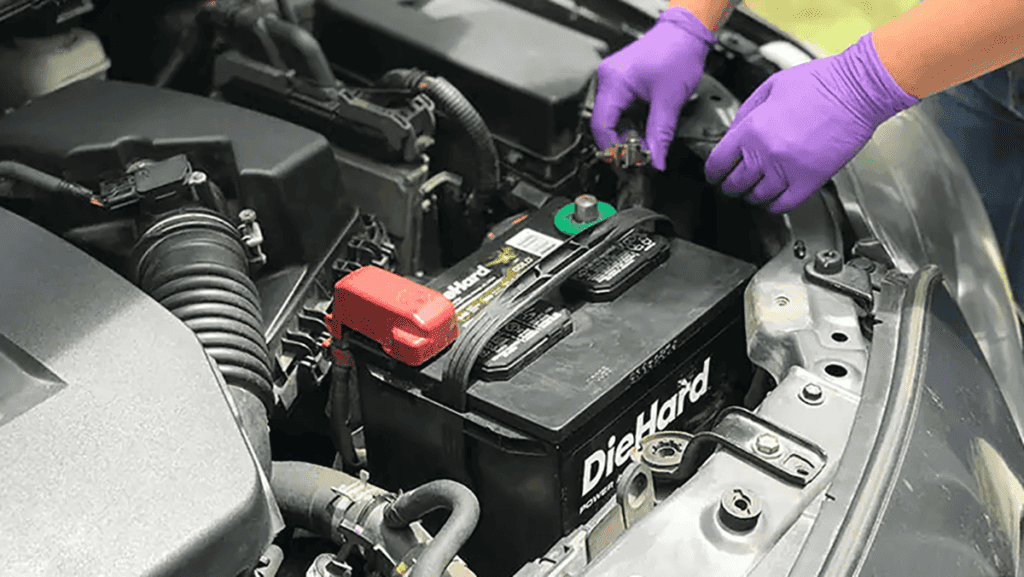Introduction: Weighing Your Options: Choosing Between DIY and Professional Assistance for Battery Troubles
Ever found yourself wondering whether you should don your mechanic hat or dial for professional assistance when faced with a dead battery? Both paths have their adventures and perils. Sit tight as we cruise through the maze of decisions!
Dealing with Dead Batteries: Steps to Take and Safety Precautions
What should you never do when changing a battery? Handling a dead car battery is like defusing a ticking bomb – it requires caution and care. From using proper tools to wearing safety gloves, this section unravels the steps to safely deal with the situation.
1. Proper Preparation: Gather Your Tools
Just as a skilled painter wouldn’t dip a mop into a bucket of paint, you must use the right tools for changing a battery. This includes:
• Wrenches
• Safety gloves
• Safety goggles
• A battery carrier or a sturdy handle
2. Disarming the “Bomb”: Disconnecting the Battery
Remember the movies where the hero must choose between the red and blue wires? Well, it’s not quite as dramatic, but you must disconnect the negative terminal first, then the positive. Mixing them up is like putting sugar in your pasta sauce – a recipe for disaster.

3. Don’t Be a Cowboy: Safety Precautions
• Avoid Open Flames: Unlike roasting marshmallows, open flames around a battery can cause an explosion.
• Use Insulated Tools: It’s like using oven mitts when baking cookies. Protect yourself from the “heat” with the right equipment.
• Wear Protective Clothing: A dead battery can be as messy as a three-year-old with a chocolate cake. Protect your clothing and skin.
4. Replacing with Care: Installing the New Battery
Place the new battery like you would place a baby in a crib – gently and securely. Connect the positive terminal first, then the negative. Tighten those connections as if you’re sealing the lid on grandma’s secret sauce.
5. The Big No-Nos: What Never to Do
• Never Touch with Bare Hands: That’s like grabbing a hot pan – painful and dangerous.
• Avoid Using Makeshift Tools: That would be like cutting steak with a spoon. Ineffective and risky.
• Don’t Dispose of the Battery Improperly: Tossing it in the regular trash is as outrageous as throwing away a Van Gogh painting.
Mobile Mechanic to the Rescue: The Benefits of Professional Battery Repair and Replacement
Like a superhero swooping in, a professional mobile mechanic offers expertise, convenience, and efficiency. Here’s why they could be your go-to hero in times of battery distress:
• Expertise at Your Doorstep: Needing a new battery is like finding your shoes have been chewed by the dog – unexpected and annoying! The mobile mechanic is like your shoe cobbler, but for cars, bringing the skill right to your location.
• Convenience is King: Stuck in the middle of nowhere? The mobile mechanic can reach you faster than you can say, “Where’s the nearest garage?” It’s like having a pizza delivered to a desert island!
• Quality Assurance: With professional assistance, you get the assurance of a job well done. It’s like hiring a master chef to cook your dinner party meal, leaving no room for mishaps.
Financial Facets: Understanding the Costs Involved in Battery Replacement
How much should it cost to replace a car battery? Deciphering the costs is like solving a jigsaw puzzle, with factors like battery type and labor playing their parts.
• The Price Tag: The costs can vary, and knowing the factors involved is akin to understanding why caviar is pricier than canned tuna. Brand, type, and complexity all play a role.
• Professional vs. DIY: Going DIY may seem cheaper, like cooking at home, but do you have the right utensils? Professional services include the right tools, expertise, and peace of mind.
• Value for Money: Sometimes, spending a little more gets you a lot. It’s like choosing the fine dining experience; you’re paying for quality and service.
DIY Endeavors: Assessing the Feasibility and Safety of Changing Your Car Battery at Home
Is it safe to change your own car battery? Embarking on a DIY mission requires a blend of courage, knowledge, and the right tools.
• Know Your Limits: DIY isn’t for everyone. It’s like trying to bake a soufflé without knowing what a soufflé is. The results might be disappointing or even dangerous.
• The Right Tools: If you’ve got the skills and tools, it’s like having your kitchen ready for a bake-off. Go ahead and whip up that battery replacement!
• Safety First: Changing a car battery isn’t child’s play. It’s more like juggling flaming torches. If you’re not careful, you could get burned. Understanding the risks and taking precautions is vital.
A Step-by-step Guide: Best Practices for Changing Your Car Battery
What is the best way to change a car battery? Think of it as cooking a gourmet meal – every ingredient must be precise, and every step followed to the letter.
1. Preparation is Key: Like gathering the ingredients, you’ll need tools such as wrenches, gloves, and safety goggles. Ensure you have the correct battery type and turn off the engine.
2. Disconnect the Negative Cable: Carefully disconnect the negative cable first. Think of it as taking the hot pan off the stove!
3. Disconnect the Positive Cable: Following suit, disconnect the positive cable, similar to gently lifting the sizzling steak off the grill.
4. Remove the Battery: Hold the battery firmly (it might be heavier than you think), and lift it out. It’s like flipping that perfectly cooked pancake!
5. Clean the Connectors: Using a wire brush, clean the connectors. Imagine this as seasoning your dish for the best flavor.
6. Install the New Battery: Place the new battery, connecting the positive cable first, followed by the negative. It’s like adding the finishing touch with a garnish!
7. Tighten Everything Up: Secure everything, ensuring no loose connections. Voila! Your gourmet dish is ready to be served.
8. Dispose of the Old Battery Properly: Don’t forget the cleaning part! Dispose of the old battery responsibly, as environmental care is like the after-dinner mint.

Jump Starts and Battery Life: Should You Replace Your Battery After a Jump Start?
This age-old question is as debated as the chicken and the egg.
• Understanding the Need for a Jump Start: Like realizing that your cake hasn’t risen, a jump start is often a sign that something isn’t right. It could be a one-time issue, or an indication that the battery is on its last legs.
• The Science Behind It: Jump-starting is a temporary solution, akin to patching up a torn recipe page. If the battery is consistently failing, it’s time to replace it, just like you’d replace a worn-out cookbook.
• Factors to Consider: Age, repeated jump starts, and visible damage to the battery are clues. If your car battery is the loaf that keeps falling flat, perhaps it’s time for a fresh start.
• The Verdict: Sometimes, a jump start is just a helping hand, like a dash of extra salt to save a dish. Other times, it’s a sign that you need a new battery, as certain as needing a new oven when the old one consistently burns your bread.
Conclusion: Making the Right Call: How to Decide Between DIY and Professional Help for Your Car Battery
Like a thrilling novel reaching its climax, the choice between DIY and professional help is a decision of strategy, budget, and skill. Is it better to replace a car battery yourself? Or is the mobile mechanic your guiding star? This conclusion ties all loose ends, helping you make the right call for your unique journey.
Call to Action: Ready to hit the road with confidence? Whether it’s a DIY endeavor or professional assistance, Uchaincs, a mobile mechanic company in Canada, is here to support your journey. Reach out to us today, and let’s drive towards success together!
